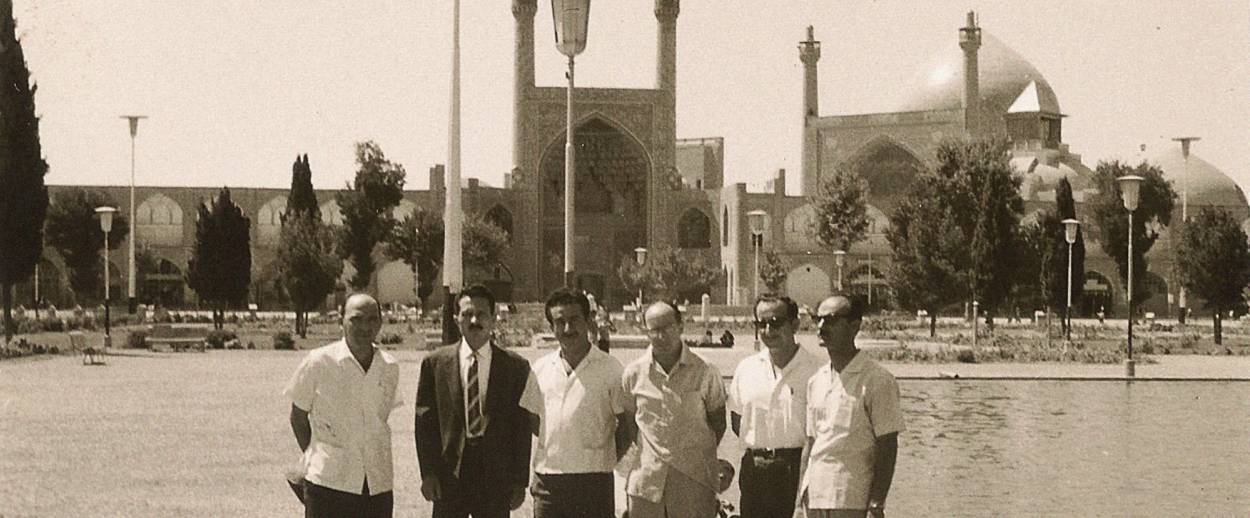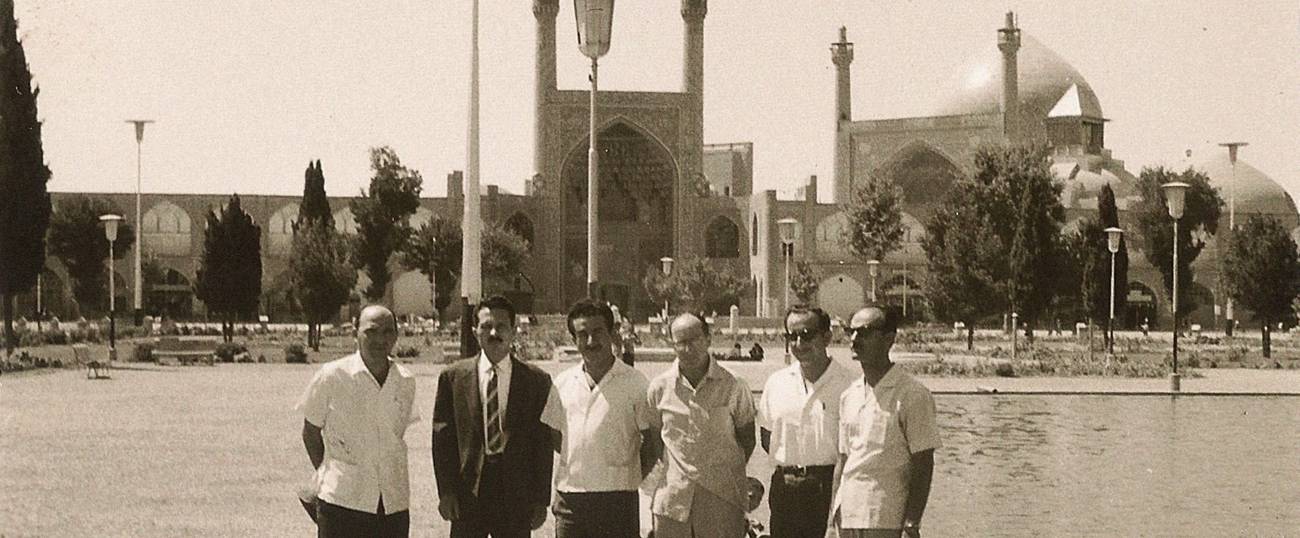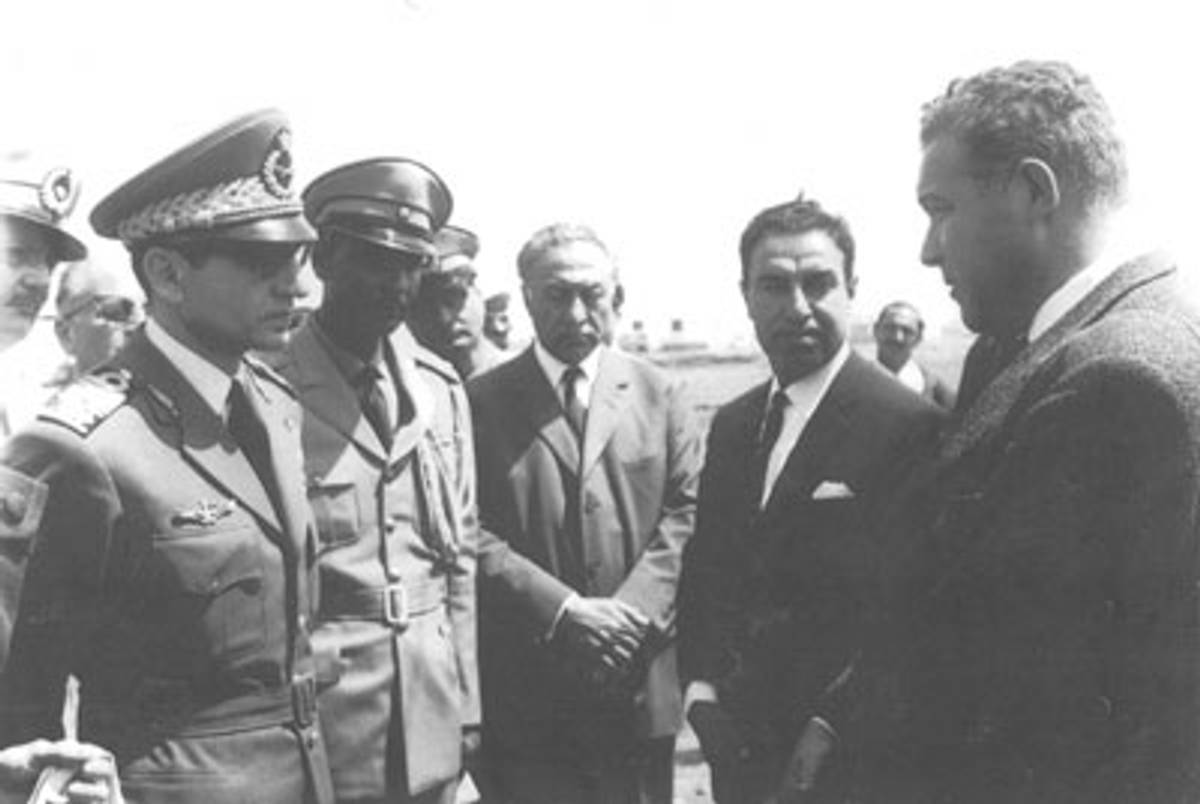The Greatest Threat Facing Iran: Running Out of Water
Israel came to Iran’s rescue decades ago—and might again be the Islamic republic’s best hope for avoiding catastrophe




If Iran is in the news because of its nuclear program, the greatest threat to the country’s well-being isn’t economic sanctions or the Sunni-Shiite schism. Rather, the greatest threat to Iran may be that the country is running out of water. The problem is so severe that social unrest, economic dislocation, even out migration can all be imagined. One government advisor recently predicted that as many as fifty million Iranians—seventy percent of Iran’s population—may be forced to leave because of a lack of water.
Water problems are a proxy for bad governance, and Iran has water problems galore. Underground resources have been overpumped beyond what can be naturally recharged by rain, and, on the present course, many aquifers will soon be unusable. Iranian agriculture is among the most wasteful in the world. Most countries use about seventy percent of their water for agriculture; Iran uses over ninety percent. Even so, Iran is already not self-sufficient in food, a trend that is projected to get worse.
The Islamic Republic’s climate is mostly arid and semiarid, which, by definition, means it only gets modest rainfall. More than half of the country’s wells are believed to have been dug illegally and many of them, possibly most, are now polluted. More than two-thirds of all industrial facilities fail to treat their wastewater, and manufacturers, even of chemical products, generally dump their waste into Iran’s waterways. Iran discharges more than sixty percent of its sewage untreated, polluting groundwater, rivers, and lakes. Climate change is only likely to exacerbate the overall poor water outlook.
By contrast, Israel—Iran’s self-declared foe—has perhaps the most sophisticated and successful integrated water management system in the world. Israel itself is sixty percent desert, has among the most rapidly growing populations and economies in the world, and markedly less rainfall than the modest amount at its founding in 1948. Even so, Israel now has such an abundance of water that it exports billions of dollars a year of fruit and vegetables, and also provides water to Palestinians and the Kingdom of Jordan every day.
A visitor to Iran looking at each of the country’s water problems and knowing that Israel has largely overcome all of them might conclude that the Islamic Republic would be wise to overcome its antagonism to Israel and invite Israelis to Iran to help manage its water sector. As fanciful—and nearly impossible—as that sounds, it is exactly what Iran’s ruler, the shah, did beginning slowly in 1960 and with a rush after 1962. Israeli hydrologists, water engineers, planners, and others became so numerous and so enmeshed in Iran’s water exploration and infrastructure that the majority of the water projects in Iran from 1962 until the 1979 Islamic Revolution were managed by Israelis. Geopolitically, for Israel the alliance with Iran served to counterbalance the hostility of the Arab states while lessening Israel’s regional isolation—at least for as long as the cooperative relationship continued.
Though not as dramatic as in the hit film Argo, the head of the Israeli water team, Professor Arie Issar, left Iran on the next-to-last direct flight from Tehran to Tel Aviv in 1979 shortly before the shah was deposed. He described scenes of descending chaos on the capital’s streets as his car made its way to the airport. That would be the last of many trips that began for him in 1962 as part of a humanitarian project trying urgently to repair an Iranian water conveyance system from antiquity.
Ancient Persia had a sophisticated, gravity-based water system used for irrigation utilizing vertical shafts called qanats that were dug on a slight decline from an underground water source to the fields where the water would be needed. In 1962, Qazvin Province, nearly one hundred miles northwest of Tehran, suffered a major earthquake. More than twenty thousand Iranians died, three hundred villages were in ruins, and the network of water tunnels first dug more than twenty-seven hundred years earlier was destroyed. Qazvin was home to a vast agricultural valley which provided fruits and vegetables to Tehran and beyond. After the earthquake, the farmers were without essential water.

Meanwhile, the shah had already been quietly cultivating a relationship with Israel. Iran believed itself vulnerable to mischief by some of the Arab states and saw Israel as a valuable counterforce. The shah was also impressed by Israel’s scientific advances in agriculture, water, and, ironically, in nuclear power. In 1960, he asked the Food and Agriculture Organization (FAO) at the UN to provide water experts to help advise Iran, and, with his consent, three Israeli technicians were sent. When the Qazvin earthquake struck, the shah already knew of Israel’s sophistication in water planning and exploration.
On an emergency basis, Israel was invited to send water engineers to Qazvin to see if the qanats could be rehabilitated. A close inspection revealed that they were damaged beyond cost-effective repair. In any event, what might have been ideal for irrigation in the time of ancient Persia was no longer optimal in an era of modern agriculture. The Israelis successfully urged government officials and the farmers to abandon the collapsed qanats and to permit them to drill deep wells of the kind Israel itself was digging back home. The Iran-Israel water relationship quickly blossomed.
Soon after well drilling in Qazvin began, Israeli water engineers received a positive reply from their Iranian government hosts to a proposal that they also be permitted to teach local farmers how to increase their yields while using less water in the process. Their interactions with Iranian farmers broadened to include advice on which crops to plant and how to market them. The majority of the local population in the greater Qazvin area came into contact with the Israeli engineers, none of whom masked their nationality or religion.
Shmuel Aberbach was one of the UN’s Israeli FAO experts who happened to be in Iran at the shah’s invitation when the earthquake struck. A geologist and groundwater expert, he made his way to Qazvin shortly after the quake and helped put together the plan for where and how to drill the region’s new wells. Over the following seventeen years, he made dozens of trips to nearly every part of the country and got to know (and often train) Iranian hydrologists. In all that time, he says he did not experience a single anti-Israel or anti-Jewish incident except for an offhand comment from an Iranian communist who hated all of the Soviet Union’s cold war rivals. Aberbach also never heard of any anti-Israel slurs reported by any of the dozens of Israelis he knew in the country except for some chants at an Iran-Israel soccer match in Tehran. Decades since his last visit to Iran in 1978, he still has close friendships with Iranians he met from his work, many of whom live in exile.
Another Israeli who spent time in Iran, Dr. Moshe Gablinger, a Cornell University-educated Israeli engineer, had similar reflections about his relationships with his Iranian hosts. Although he didn’t develop any lifelong relationships, he also only had friendly, cordial interactions. “We never socialized with them in their homes, but there were warm relationships,” he says. “To meet an Iranian hydrologist in a restaurant for dinner wasn’t an unusual experience.”
Professor Issar, the Israeli in charge of all water exploration and drilling operations in Iran, remembers being taken to remote corners of the country and being introduced to local residents by Iranian hydrologists who would travel with him. “They would say that I came from Israel to share our knowledge with them,” he says. “I was always welcomed and invited to a special meal which they rushed to prepare. The only problem I would have was that I had to sit on the carpet on the floor and eat the roasted lamb and rice without a knife and fork.”
The caliber of the Iranian water professionals was not generally high. “Despite all of its oil, Iran was a poor country then and its education system didn’t properly prepare its water professionals,” says Dr. Gablinger. “The people assigned to me were very nice personally, but quite backward and unsophisticated technologically.” Professor Issar instituted programs training hydrologists and technicians and offered classes in geology, hydrology, and chemistry. Shmuel Aberbach taught advanced mathematics to Iranian hydrologists and geologists to produce predictive models on how much water was remaining in aquifers.
Iran’s welcoming attitude for its Israeli guests included some touches unimaginable today. The shopkeepers in Qazvin learned Hebrew to better engage with their new customers. Dr. Gablinger remembers most of his local interactions with the merchants being in Hebrew. Moreover, by the mid- to late 1960s, so many Israelis had arrived in Qazvin with their families that a local building was converted into a school in which Hebrew was the language of instruction for the sixty Israeli children who studied there under Israeli teachers. Even more remarkable, the shah came to visit Arie Issar and his team in Qazvin not long after Israel’s crushing defeat of three Arab armies in the June 1967 Six-Day War—signaling his approval of the work of the Israelis in Iran.
The shah also encouraged delegations of Israelis in other specialties to visit, and he sent Iranian officers and scientists to Israel. Some Iranian water professionals stayed in Israel for extended periods to learn advanced Israeli techniques. Commercial and political ties between the countries became deep and wide.
“The only part of Iranian society we could not penetrate was the religious establishment,” says Uri Lubrani, Israel’s ambassador to Iran from 1973 until shortly before the shah was deposed. “We were welcomed everywhere else. Everyone in Iran is either very religious or from a home that was. Even the Iranian communists then knew Islamic ritual. No one used religious differences to keep Israelis away except for the clerics. We tried hard, but they wanted no part of us. Arafat [the head of the Palestine Liberation Organization (PLO)] had cleverly cultivated [Ayatollah] Khomeini in exile, and Khomeini had made it clear to the religious administration to have no contacts with us.”
Notwithstanding the views of Iran’s clerical sector, the initial success of the Israeli engagement in Qazvin was extended to many other provinces and regions. An Israeli government-owned water engineering company, TAHAL (an acronym for the Hebrew words “Water Planning for Israel”), was asked to supervise the construction of water and sewer systems in such major Iranian cities as Isfahan and Bandar Abbas and to create household and irrigation water systems for whole regions, like Hamdan and Kermanshah. When Mashhad, Iran’s second-largest city, needed a system developed to distribute cooking gas for homes citywide, the Iranian government turned to TAHAL to do that, too.
Other Israeli-government companies in related water areas were also invited into Iran. Mekorot, the Israeli national water utility, was asked to drill for water throughout Iran as it had done in Israel, and to run a large project on the Iranian part of the Caspian Sea, among other assignments. Solel Boneh, also an Israeli government-owned entity which handled major construction projects back in Israel, was hired to build dams throughout Iran and infrastructure in Iran’s cities.
Around 1968, IDE, an Israeli government company created to brainstorm desalination ideas, developed a breakthrough energy-saving process, and it was eager to test the concept in real-world settings. At about that same time, the Iranian Air Force wanted to secure safe, clean water for its bases. Professor Arie Issar remembers that the Israeli military attaché in Tehran, Colonel Yaakov Nimrodi, saw this as an opportunity to use Israel’s water expertise to deepen the Iranian-Israeli military connection. Nimrodi arranged for IDE to be invited into Iran. Over the following decade, IDE installed thirty-six small desalination units on Iranian Air Force facilities and nineteen others around the country.
In 2007, nearly forty years after IDE began installing desalination systems in Iran and long after the Islamic Republic had severed all ties with Israel, Fredi Lokiec, an IDE senior executive, was at a trade show in Europe when he was quietly approached by an Iranian engineer. The Iranian told him that several of those aging Israeli desalination units were still in use and that Iranian technicians had attempted to reverse engineer one of them so that they could start building copies of the Israeli unit from scratch inside of Iran. He said that they got the copied plants to work, but never as well as the ones built by Israel.
After the 1979 revolution in Iran, Khomeini and his supporters held mass trials of Iranian government officials and others thought to have been the shah’s supporters. People of the Bahá’í faith were also at risk and widely persecuted. Both Arie Issar and Shmuel Aberbach had Iranian friends and colleagues in Iran’s water industry, a few of whom were Bahá’í but mostly Muslims, who fled the country in the first days of the revolution and who still live in exile. Tragically, both Israelis also knew Iranian water officials who were executed for still unknown crimes. With Israeli water experts expelled from the country and many Iranian water professionals exiled or executed, Iran’s water industry was dealt a lasting blow that sowed the seeds of Iran’s coming water calamity.
Excerpted from Let There Be Water: Israel’s Solution for a Water-Starved World. Copyright © 2015 by Seth M. Siegel and reprinted by permission of St. Martin’s Press, LLC.
***
Like this article? Sign up for our Daily Digest to get Tablet Magazine’s new content in your inbox each morning.
Seth M. Siegel’s essays on business, political, and cultural issues have appeared in The New York Times, The Wall Street Journal, The Los Angeles Times, and other publications. He is a member of the Council on Foreign Relations.